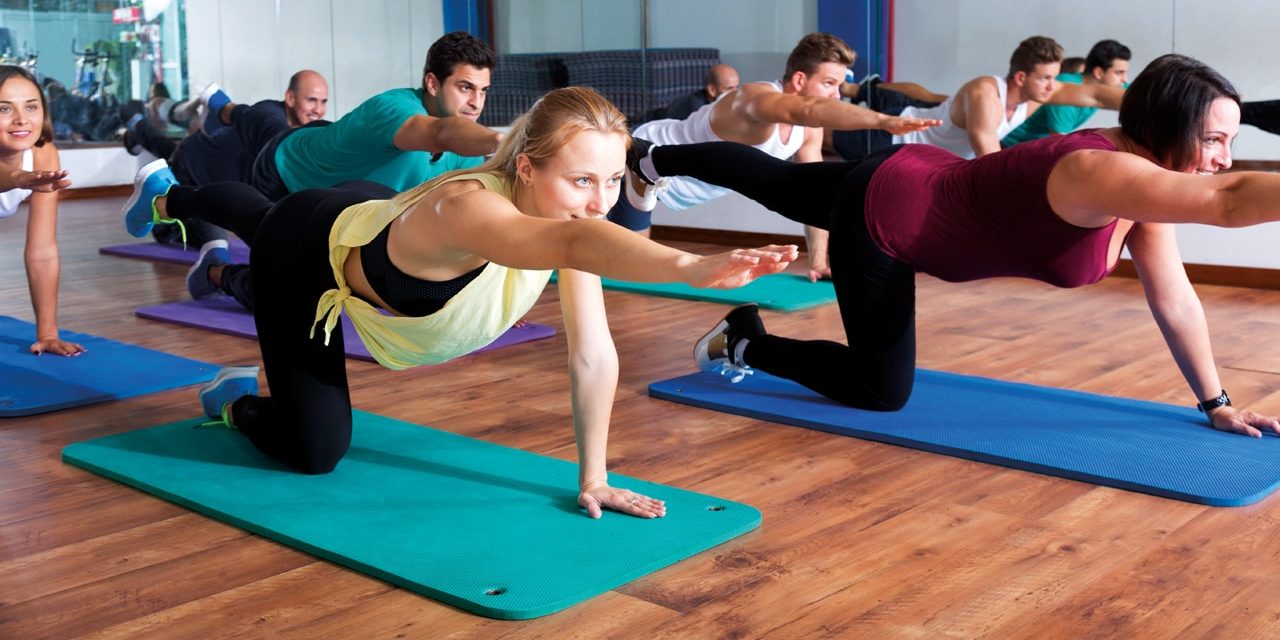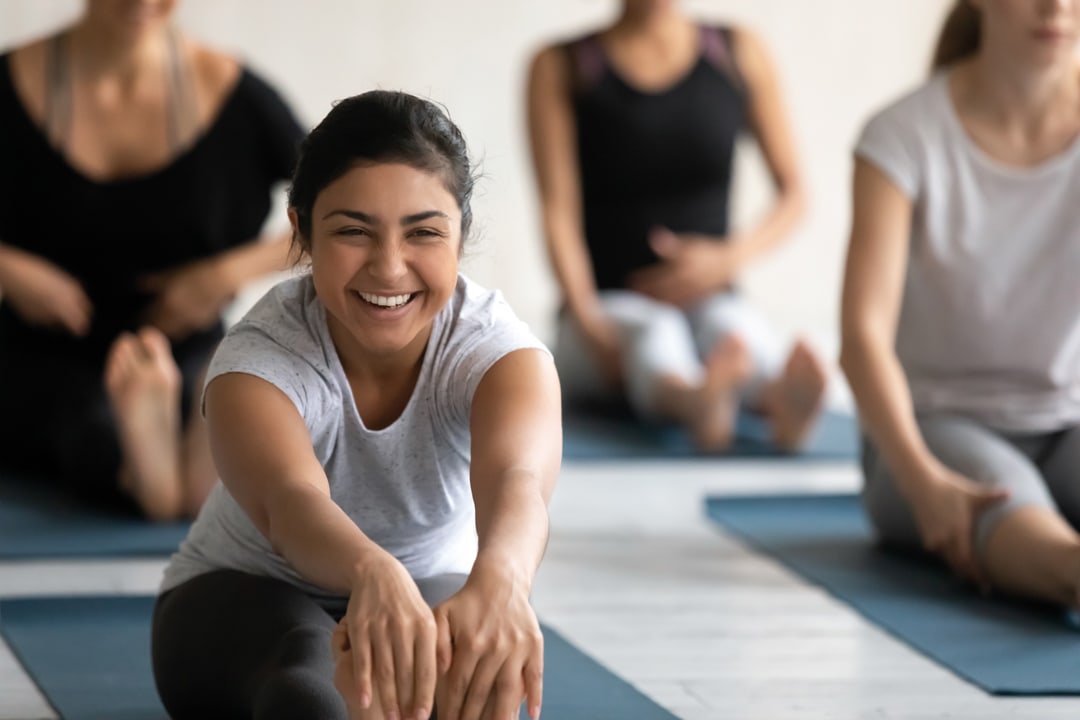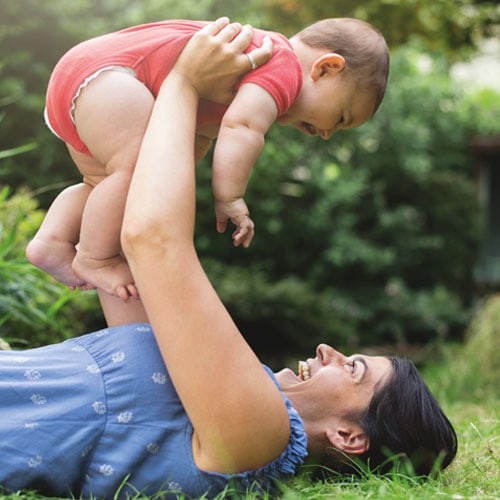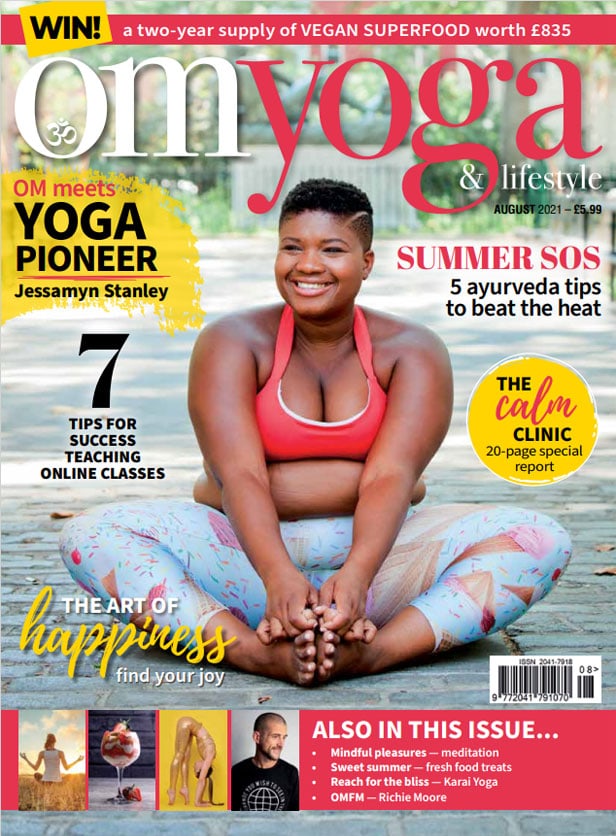
Yoga = happiness
Yoga keeps my happy toolbox full, writes Emily Young
After yoga class I am full of positive emotions; I feel more content, I make clearer decisions, I like people more and I am more productive. My husband knows if I need to go to yoga, like I need a pill! On particularly busy days or weeks, he pushes me out the door, shoving my mat in my arms as I leave behind a Zoom-filled laptop day and a screaming baby. He reminds me that I am happier when I have been to yoga and that my happiness is infectious to our family.
When I’ve been to yoga my happy toolbox (my coping resource) is full of patience, love, resilience, joy and gratitude. The science of happiness (positive psychology) has taught me that keeping my happy toolbox full can also positively affect the function of my brain, neurons and neuroplasticity.
Positive emotions play a role in our survival. Love, joy and gratitude are commonly experienced during and soon after we do yoga-based practices; they are certainly in many yoga teachers’ scripts!
Research by influential happiness scholar Barbra Fredriksson suggests when people experience positive emotions, their minds broaden, and they open up to new possibilities and ideas.
Psychologists believe that positive emotions help us to build our physical, cognitive and social resources (our happy toolbox). These resources are durable and can be called upon in different emotional states to support us later, maintaining our happiness.
Fredriksson’s theory also suggests that negative emotions serve the opposite function of positive ones. When threatened with negative emotions or stressors like anxiety, fear, frustration, or anger, the mind constricts and focuses in on the imposing threat (real or imagined), thus limiting one’s ability to be open to new ideas, build resources and relationships. Sustained exposure to such stressors can lead to stimulation of the sympathetic nervous system prompting neural, immune and endocrine responses, which can trigger physiological pain, illness or disease. Life will always present us with stress. However, stress can be positive and tolerable when we have the resources and resilience to cope and recover.
Yoga-based practices offer us both a top-down (mindfulness) and bottom-up (asana and breathwork) approach to building up our resource of positive emotions.

Mindfulness and drawing your attention to the feeling of a posture or a bodily sensation can:
- activate the pre-frontal cortex in such a way that you soothe your anxious mind
- create a positive and compassionate relationship with your body
- help us discover and use tools for self-regulation and processing sensations and emotions
- release stored stress or trauma in the brain and nervous system
Asana and breathing practices that include slow controlled exhales, breathing deep into the belly and at a slow rate can:
- activate the vagus nerve sending messages from the lungs to the brain that we are safe
- lower the heart rate, which in turn signals back to the brain to relax
- increase parasympathetic nervous system activity, as measured by blood pressure, heart rate and heart rate variability
- increase neuroplasticity in both the prefrontal cortex and cerebellum areas of the brain
Studies have shown that these benefits are experienced immediately when practicing yoga, but one class every six weeks isn’t going to cut it. You will undoubtedly be using up some of that happy toolbox to manage everyday stressors, so it needs topping up – regularly. So, get to that yoga class!

Emily Young is a psychology researcher and yoga teacher trainer at Mula Yoga, Lancashire. Find her at: emilyyoung.space


